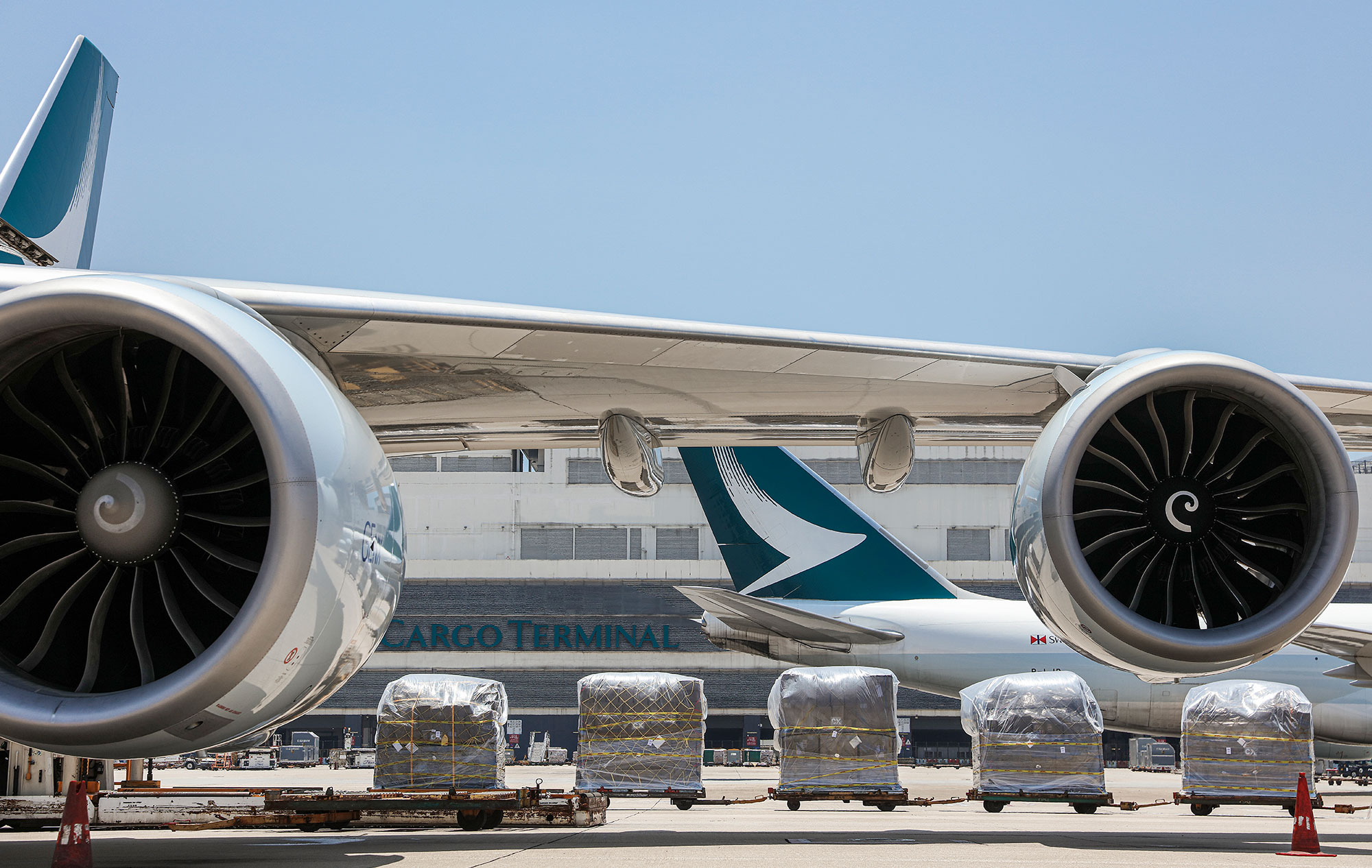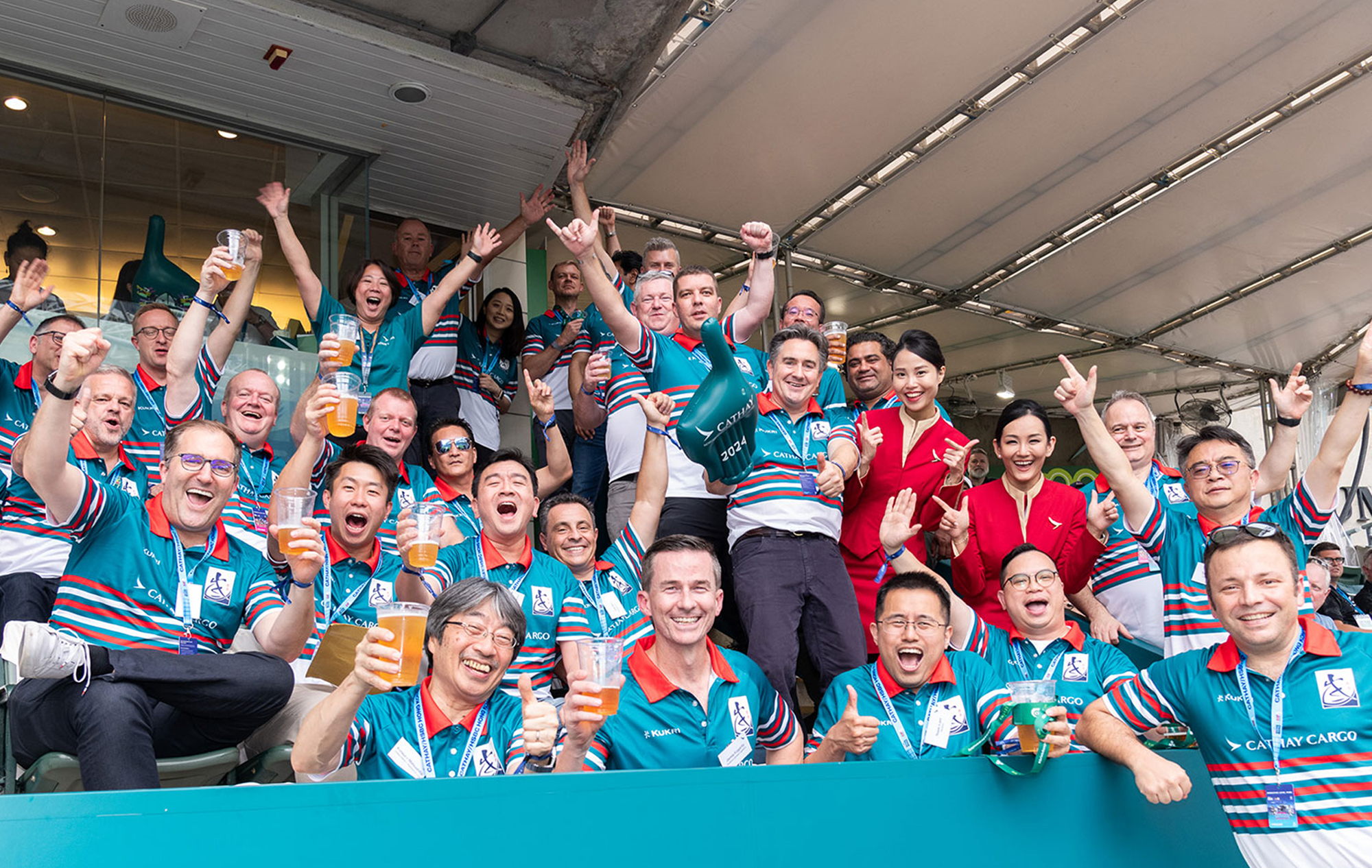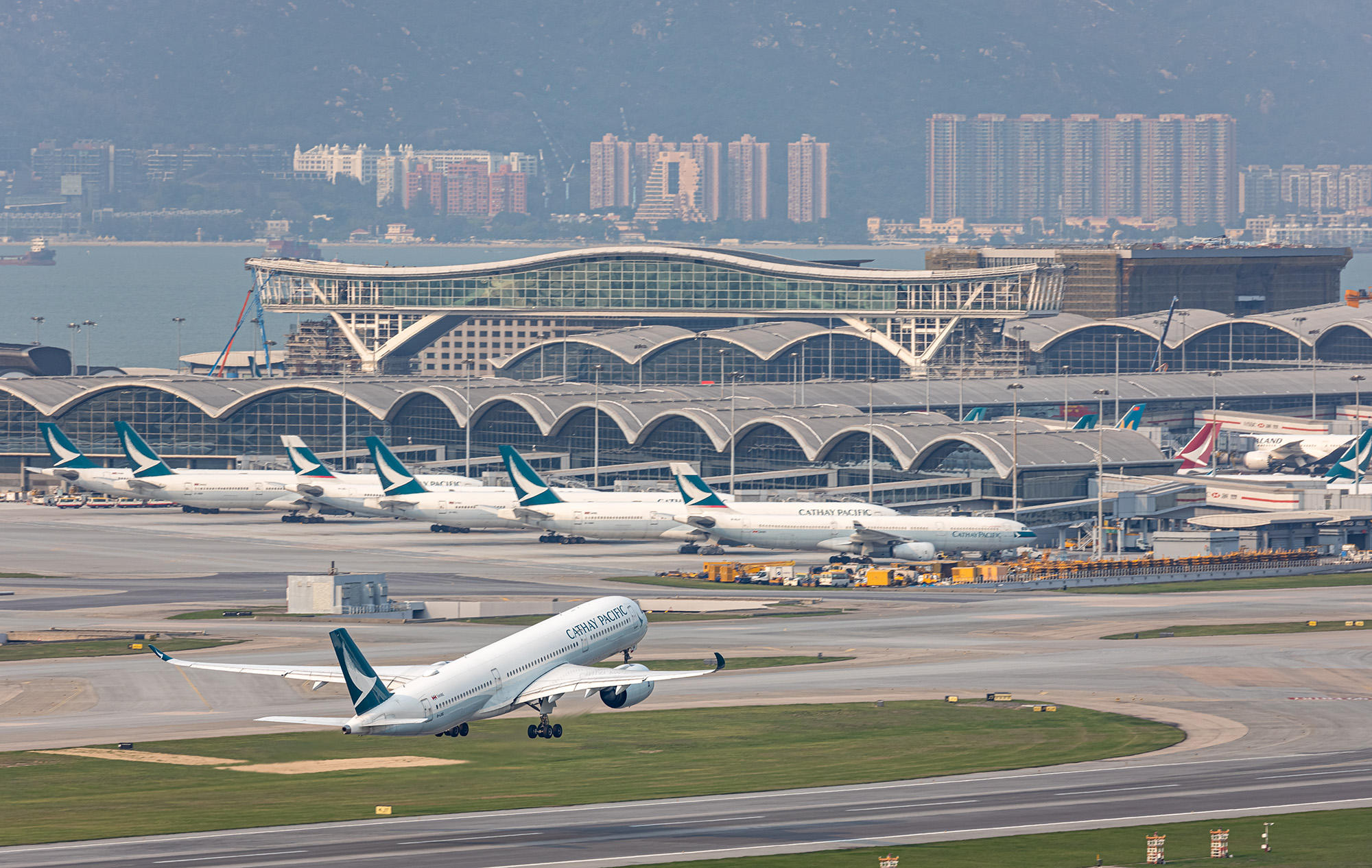One of the clearest manifestations of Cathay Cargo’s new branding is the livery on the 20-strong Boeing 747 freighter fleet. Already a striking sight at low levels in the sky and at airports around the world, these freighters are true brand ambassadors and graphically demonstrate Cathay Cargo’s capabilities and ‘We Know How’ expertise, as well as capacity – in a very literal sense.
The Boeing 747-8F freighter registered as B-LJN, is the first aircraft in Cathay Cargo’s fleet to receive the new livery. There are some advantages inherent in the design of the new livery when it comes to freighters. As they do not have a line of windows in the main cabin where the passenger cabin would be, this allows for the lettering to be bigger, so it can occupy a bigger vertical space than on the Cathay Pacific passenger fleet. And as ‘Cathay Cargo’ is shorter than ‘Cathay Pacific Cargo’, the size of the wording goes up by 160% to really boost the messaging.
The paintwork for Cathay’s aircraft is normally carried out at the HAECO (Hong Kong Aircraft Engineering Company Limited) facility in Xiamen, which is where many Cathay aircraft go for longer scheduled maintenance checks. This gives enough time for paint to dry between coats. If the paintwork were stripped right back to the fuselage, you would need around 177kg of paint to bring a Boeing 747 up to brand livery standards. The fuselage, uses a blend of Cathay white (it offers better aerodynamic performance), and a neat stripe of Cathay grey: each require three coats of paint; while the livery and tail in Cathay Jade green need four and six coats respectively.
By the numbers
177kg The approximate weight of paint needed to repaint a Boeing 747
160% Increase in size of the Cathay Cargo branding on the fuselage
20% Increase in size of the Cathay brushwing on the nose door
6 Coats of paint required to finish the tail








